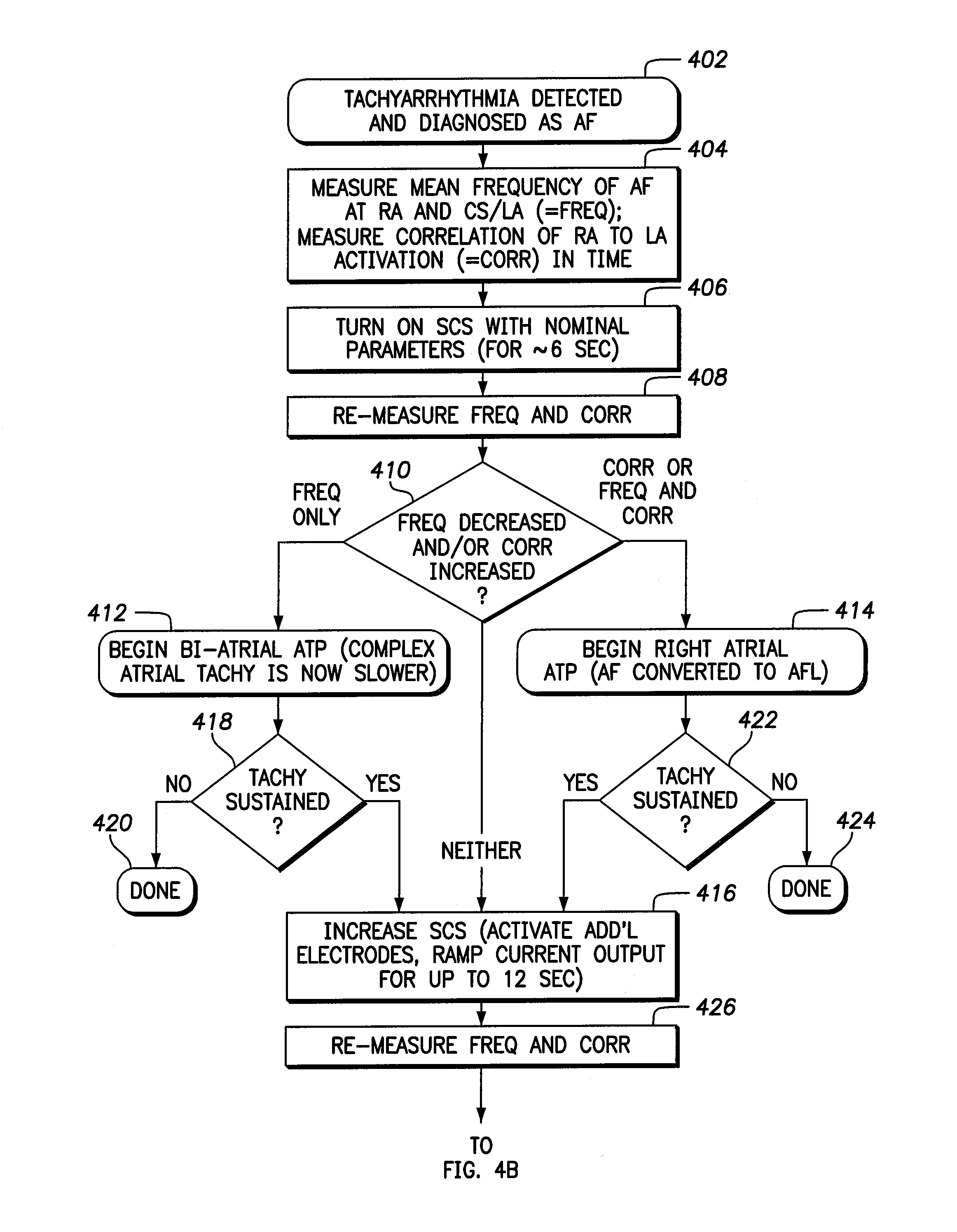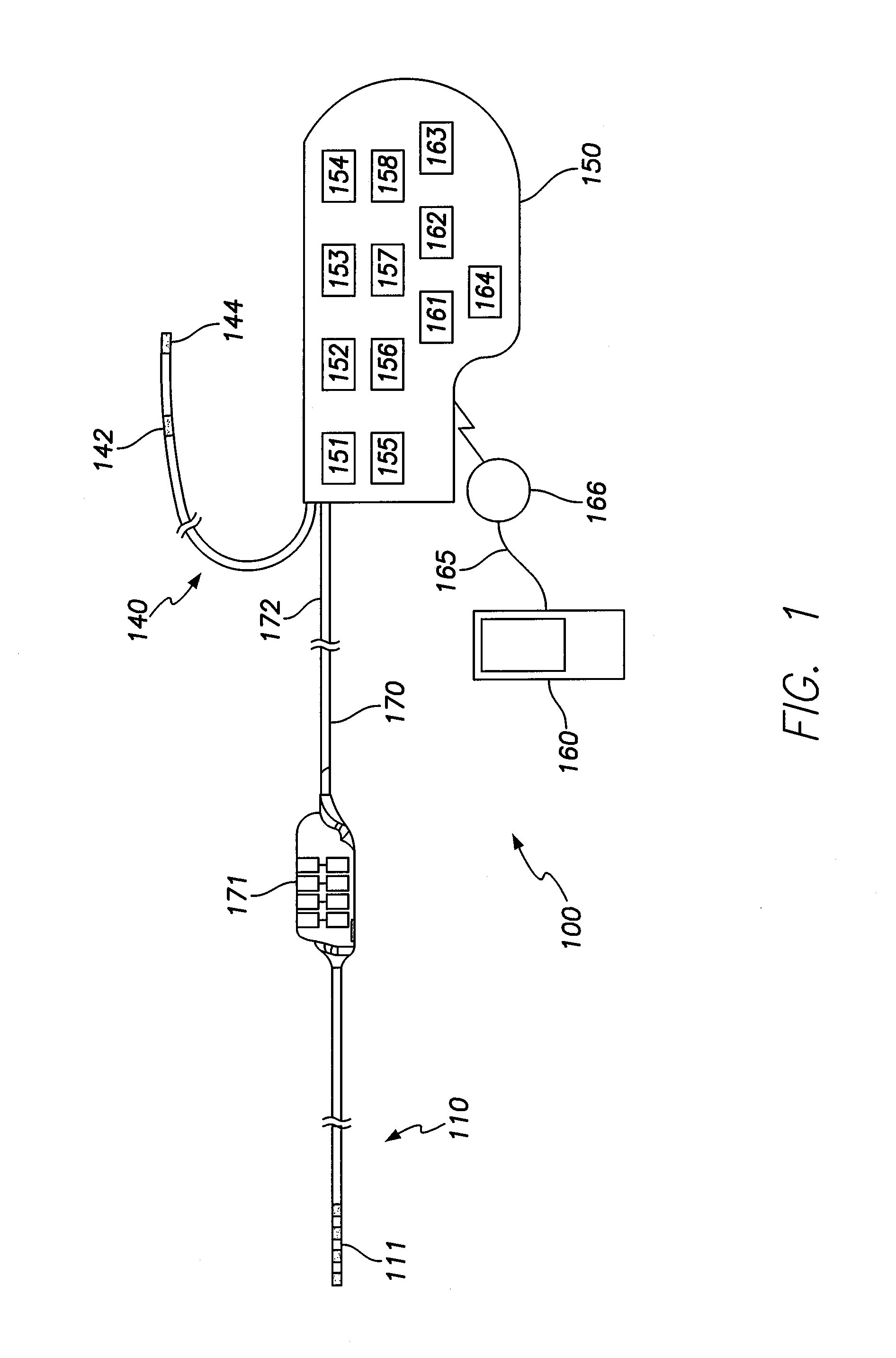Method and system to provide neural stimulation therapy to assist anti-tachycardia pacing therapy
a neural stimulation and pacing technology, applied in the field of neural stimulation systems and methods, can solve problems such as the development of a large amount of patients
- Summary
- Abstract
- Description
- Claims
- Application Information
AI Technical Summary
Benefits of technology
Problems solved by technology
Method used
Image
Examples
Embodiment Construction
[0028]Embodiments described herein include systems and methods that utilize neural stimulation (NS) therapy to assist anti-tachycardia pacing (ATP) therapy. NS therapy, such as spinal cord stimulation, modulates the balance of autonomic tone, reducing sympathetic drive and / or increasing parasympathetic activation. Additionally, it has been shown that NS therapy prolongs atrial effective refractory periods, and enhances the repolarization changes in response to direct vagal stimulation. NS therapy, such as spinal cord stimulation, is achieved by a multi-electrode lead implanted in or along the epidural space and connected to a pulse generator. The selection of electrode configuration, frequency, pulse width, and stimulus intensity are all controllable / programmable parameters. In accordance with embodiments, logic is provided within the NS pulse generator that allows automatic turning ON or OFF of the stimulation and also automatic adjustment of stimulation parameters based on previou...
PUM
 Login to View More
Login to View More Abstract
Description
Claims
Application Information
 Login to View More
Login to View More - R&D
- Intellectual Property
- Life Sciences
- Materials
- Tech Scout
- Unparalleled Data Quality
- Higher Quality Content
- 60% Fewer Hallucinations
Browse by: Latest US Patents, China's latest patents, Technical Efficacy Thesaurus, Application Domain, Technology Topic, Popular Technical Reports.
© 2025 PatSnap. All rights reserved.Legal|Privacy policy|Modern Slavery Act Transparency Statement|Sitemap|About US| Contact US: help@patsnap.com



